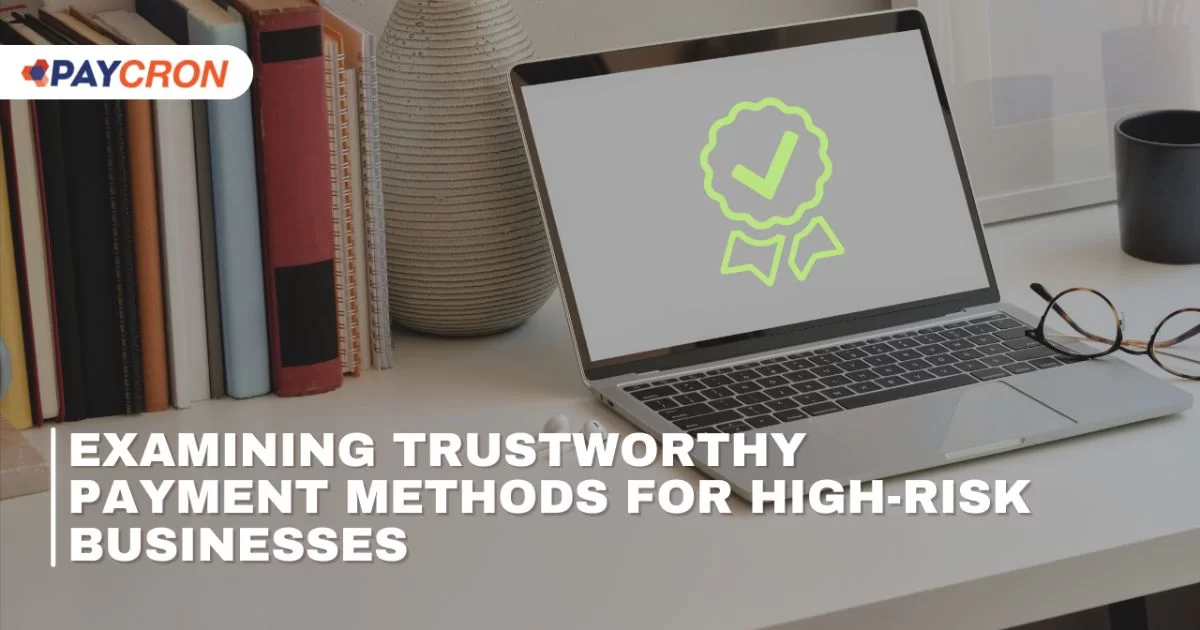
| September 18th, 2023 |
Examining Trustworthy Payment Methods for High-Risk Businesses | Guide on How to Use Online Check Payments!
The technology and finance world is evolving constantly and businesses need a secure and efficient payment gateway to process their payments. High-risk businesses, in particular, face unique challenges when it comes to processing payments. Let’s delve into the world of payment gateways, explore an unconventional yet effective Online Check Payments Method for high-risk businesses, and know the advantages to Accept payment online by e-check.
Understanding High-Risk Business Landscape —
Before delving into the payment gateway, let’s first grasp some knowledge about the nature of high-risk businesses. These organizations are considered riskier for payment processing due to various factors such as industry type, financial history, or regulatory considerations. Sectors like airlines, online gaming, cryptocurrency, and nutraceuticals often fall within this category.
For high-risk businesses, the search for a reliable payment gateway can be challenging. Traditional processors often decline their applications due to the high risk of chargebacks and fraud. This is where alternative payment methods come into the picture and one of the most intriguing options is paying by echeck online.
The Benefits of Paying by eCheck —
Finance technology is changing rapidly and electronic payment methods like credit cards and digital wallets have become common, Echecks remain a viable and, in some cases, preferable option for high-risk businesses. Let’s look at why:
Reduced Risk:
Echecks, or electronic checks, are less attractive to fraudsters compared to credit card payments. This is because echecks often involve robust authentication processes and digital signatures, making them secure and seamless. Additionally, echecks typically require customers to provide their bank account information, adding an extra layer of verification. This reduced risk of fraud and disputes significantly lowers the likelihood of chargebacks, which is a major concern for high-risk merchants.
Enhanced Stability:
High-risk businesses often face the risk of account closures or fund freezes when using traditional payment methods. Echeck provide them enhanced stability and control over financial operations. As e-check transactions are processed through a secure electronic system, there is less reliance on traditional banks, which may be hesitant to work with high-risk businesses.
Lower Transaction Costs:
If you compare traditional credit card transactions with echecks, the transaction cost you’ll notice will come out much lower. Payment gateways and processors frequently charge higher fees for high-risk credit card transactions due to the associated risks. The processing costs for echecks are reasonable leading them to be an attractive and reliable option for high-risk businesses looking to reduce their payment processing costs.
Meeting Customer Preferences:
Digital payment methods have gained popularity, but there are some customers in specific industries or demographic groups, who still prefer paying by check, even in electronic form. They offer the advantage of meeting customer preferences without the need for physical contact. By offering echecks as a payment option, high-risk businesses can broaden their customer base and amplify customer loyalty and satisfaction by catering to those who feel more comfortable with this payment method.
How does the echeck system work?
The processing of e-check is quite similar to the traditional paper check processing. Instead of filling out a paper and sending it to the business they need to pay, technology allows the whole process to happen electronically, saving time and paper effectively.
Let’s look at how a reliable merchant collects payment via echecks:
1. The customer initiates a transaction:
The customer initiates an echeck transaction to pay for goods or services, they are authorising digital payments or an electronic money transfer between their bank account and the merchant’s bank account. A reliable merchant can get this authorization in a completely different way. They can include a signed contract, an authorization form, or an order form, among other things.
A merchant receives some confirmation that the customer is expecting to part with their money. With the right authorization, eChecks can be set up as recurring payments.
2. Merchant Captures the necessary payment details:
As soon as the merchant receives this authorization, he or she needs all the information required to process the payment. The customer’s bank account numbers are included in this information. Whenever recurring payments are involved, the merchant will collect all the details related to the schedule of payments.
3. Credentials are verified by the payment Processor:
The transaction passes a verification process with the merchant’s payment processor. For example – does the name of the customer match the name of the account they’re paying from? Or is there enough money in the account to make this payment successfully? The payment process runs some checks to verify that the transaction is safe and legitimate. Once all the verification is done, the transaction is ready to be processed.
4. Deposited funds:
The funds move through the ACH network, from the customer’s account to the organization’s account. The software sends the payment receipt to the designated customer, and the payment itself gets deposited into the organization’s bank account. These transactions often take three to five business days to appear in the destination account.
How long does it take eChecks to clear?
The timeline for eCheck clearance can vary slightly depending on the service provider used. Typically, eCheck processing takes place within 24 to 48 hours from the moment the transaction is initiated. Assuming the payer has sufficient funds available in their checking account, the eCheck transaction is usually cleared within a timeframe of three to five business days, after which the funds are transferred to the payee’s account.
Parting Note —
For high-risk businesses, merchant services processing or payment processing can be a daunting task. While the technology evolution has brought us different payment options, sometimes the most conventional methods, such as paying by eChecks, can provide the stability and security that high-risk businesses need.
Remember, the key to success lies in finding a reliable check processing service provider, integrating the payment option seamlessly into your operations, and educating your customers. By doing so, you can offer a trusted payment solution that not only mitigates risk but also expands your customer base.
In conclusion, when it comes to high-risk businesses, sometimes old-school checks can be the new-age solution you’ve been searching for.
